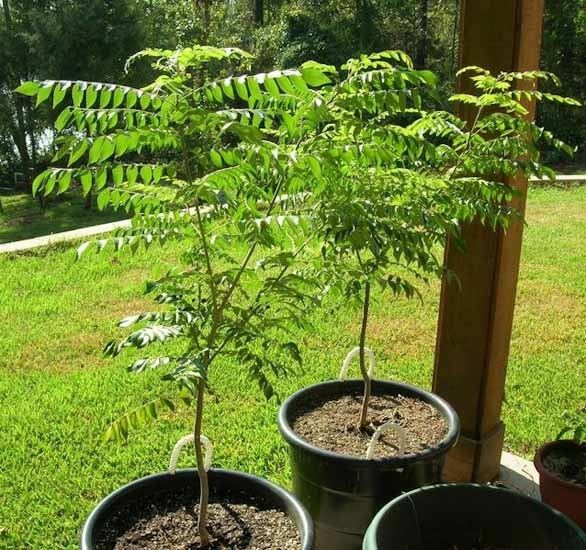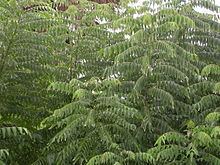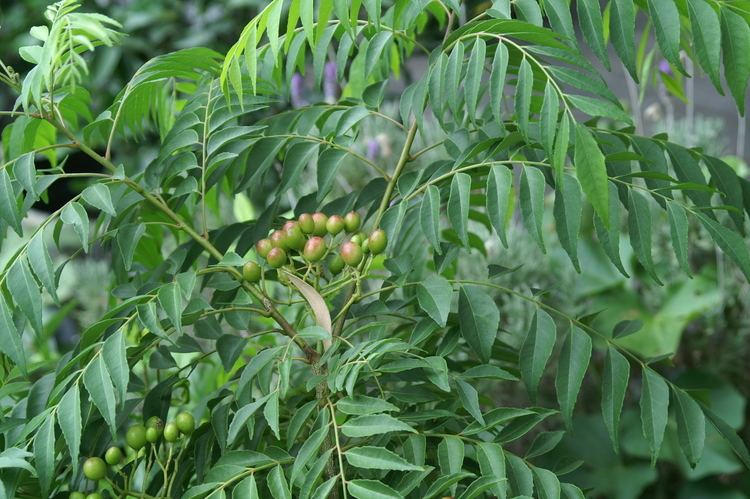Higher classification Murraya | Genus Murraya Rank Species | |
 | ||
Similar Mustard seed, Dal, Water, Masala, Fenugreek | ||
Curry leaf plant curry tree or murraya koenigii from seed to tree the complete guide
The curry tree (Murraya koenigii or Bergera koenigii) is a tropical to sub-tropical tree in the family Rutaceae (the rue family, which includes rue, citrus, and satinwood), which is native to India and Sri Lanka.
Contents
- Curry leaf plant curry tree or murraya koenigii from seed to tree the complete guide
- Curry tree pruning harvest of curry leaf plant or tree
- Description
- Uses
- Propagation
- Alkaloids
- References

Its leaves are used in many dishes in India, Sri Lanka , and neighbouring countries. Often used in curries, the leaves are generally called by the name 'curry leaves', although they are also literally 'sweet neem leaves' in most Indian languages (as opposed to ordinary neem leaves which are very bitter and in the family Meliaceae, not Rutaceae).

Curry tree pruning harvest of curry leaf plant or tree
Description

It is a small tree, growing 4–8.7 m (13–31 feet) tall, with a trunk up to 81 cm (32 in) diameter. The aromatic leaves are pinnate, with 11–21 leaflets, each leaflet 2–4 cm (0.79–1.57 in) long and 1–2 cm (0.39–0.79 in) broad. The plant produces small white flowers which can self-pollinate to produce small shiny-black berries containing a single, large viable seed. Though the berry pulp is edible—with a sweet but medicinal flavour—in general, neither the pulp nor seed is used for culinary purposes.

The species name commemorates the botanist Johann König. The genus Murraya commemorates Swedish physician and botanist Johann Andreas Murray who died in 1791.
Uses

The leaves are highly valued as seasoning in southern and west-coast Indian cuisine, and Sri Lankan cuisine especially in curries, usually fried along with the chopped onion in the first stage of the preparation. They are also used to make thoran, vada, rasam and kadhi. In their fresh form, they have a short shelf life and do not keep well in the refrigerator. They are also available dried, though the aroma is largely inferior. Leaves can also be harvested from home-raised plants as it is also fairly easily grown in warmer areas of the world, or in containers where the climate is not supportive outdoors.
The leaves of Murraya koenigii are also used as an herb in Ayurvedic medicine.
Although most commonly used in curries, leaves from the curry tree can be used in many other dishes to add flavour. In Cambodia, Khmer toast the leaves in an open flame or roast it until crispy and then crush it into a soured soup dish called maju krueng.
Because of its aromatic characteristic properties, the plant has uses in soap making, body lotions, potpourri, scent, air fresheners, body fragrance, perfume, bath and massage oils, aromatherapy, towel scenting, spas and health clinics, incense, facial steams or hair treatments.
In the absence of tulsi leaves, curry leaves are used for rituals, such as pujas.
Propagation
Seeds must be ripe and fresh to plant; dried or shriveled fruits are not viable. One can plant the whole fruit, but it is best to remove the pulp before planting in potting mix that is kept moist but not wet.
Stem cuttings can be also used for propagation.
Alkaloids
Alkaloids found in curry tree leaves, stems, and seeds include mahanimbine, girinimbine, koenimbine and mahanine.
